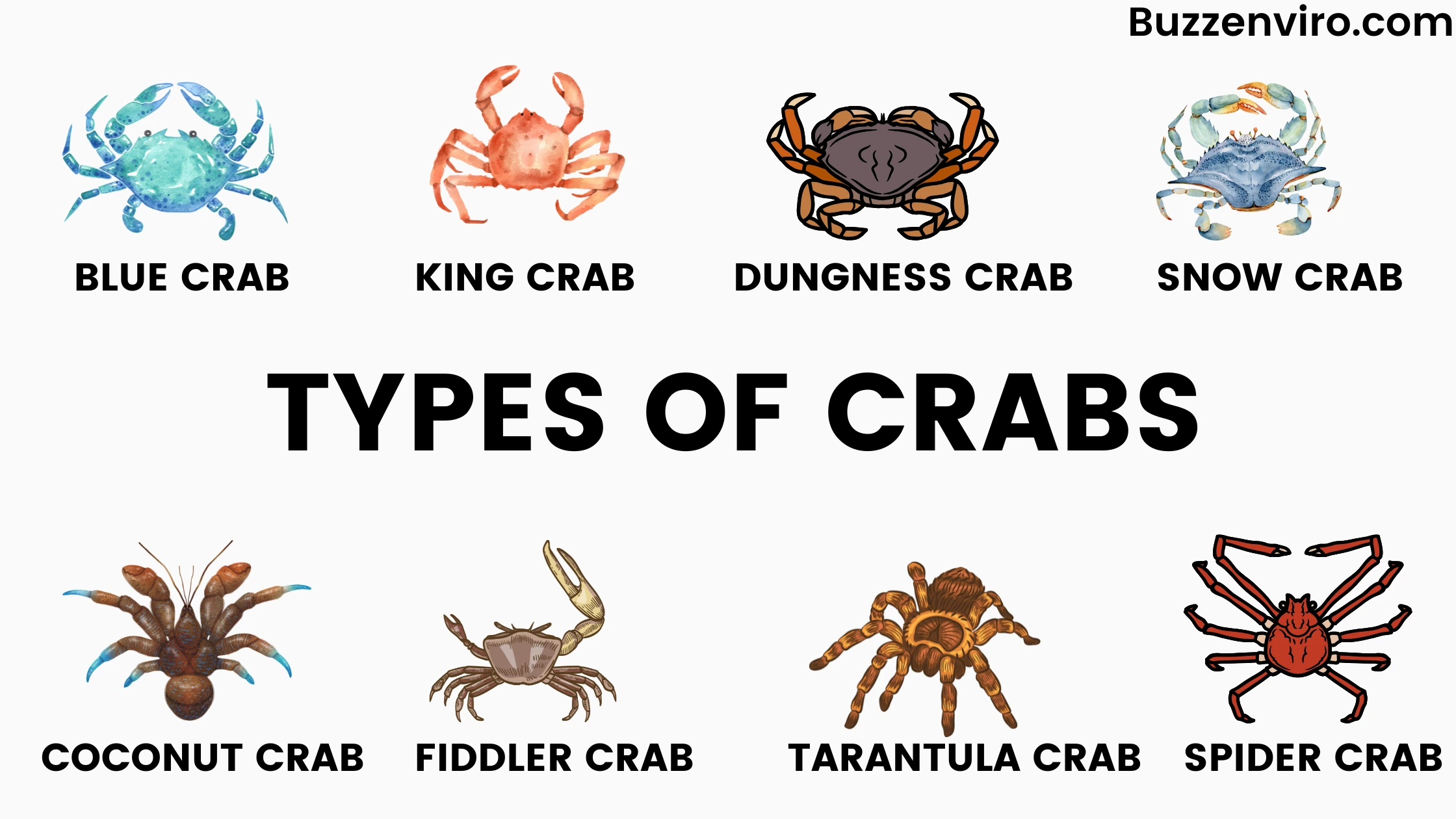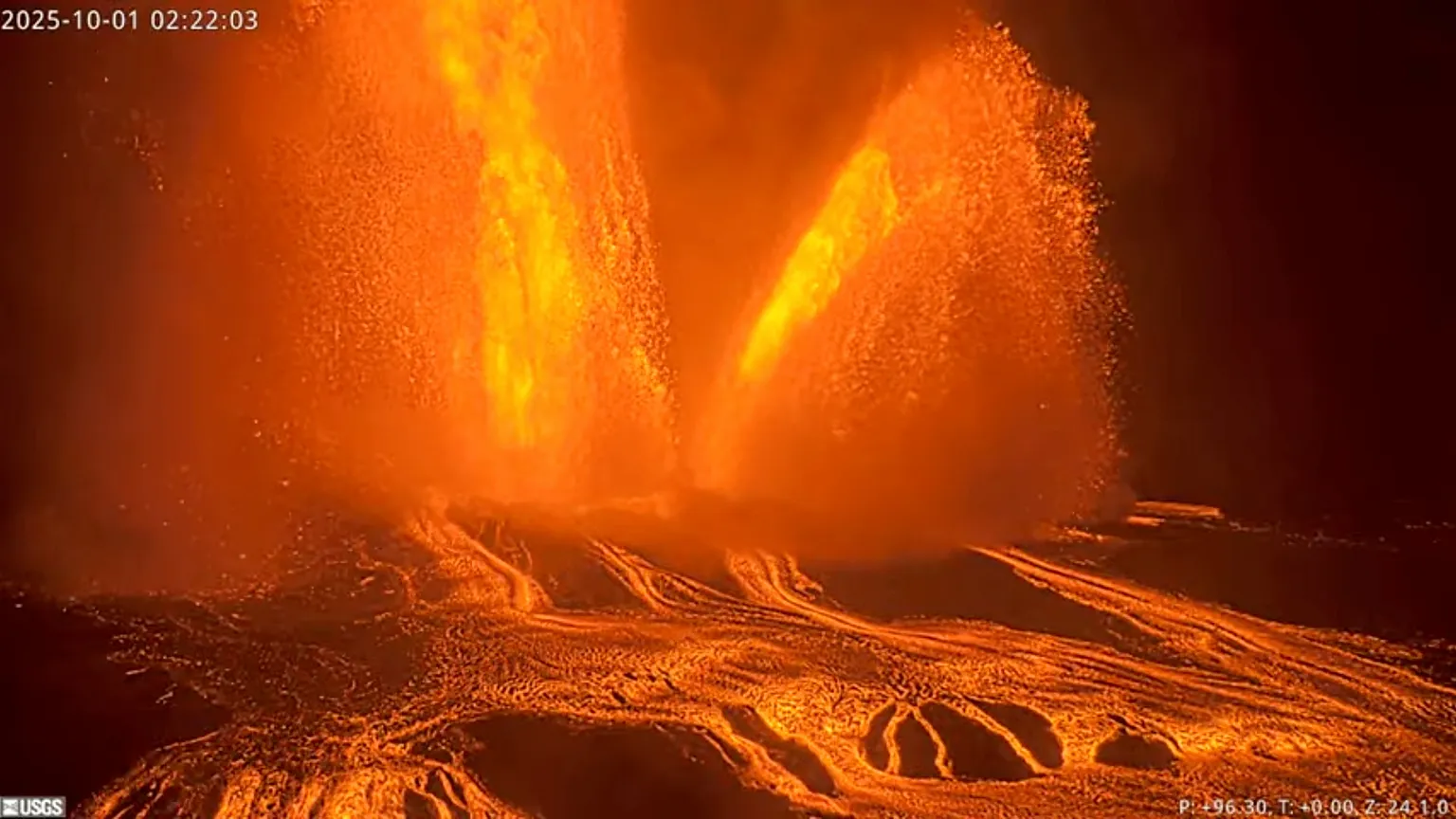Crabs are among the most diverse and widely recognized marine animals. Found in oceans, rivers, and even on land, crabs belong to the order Decapoda, which means they have ten limbs. With over 4,500 species, crabs come in various sizes, shapes, and colors. In this blog, we’ll explore the different types of crabs and what makes each one unique.
1. Blue Crab (Callinectes sapidus)

- Discovered: First described by Carl Linnaeus in 1758 known as also Atlantic Blue crab, Maryland blue crab
- Found: Blue crabs are commonly found along the Atlantic Coast of North America and in the Gulf of Mexico. They live in estuaries, marshes, and shallow coastal waters. But due to overfishing and environmental issues some of the fisheries have seen declining yields especially in the Chesapeake Bay fishery.
- Shape and Size: Blue crabs have a smooth, oval-shaped body with a hard exoskeleton. Their carapace is usually a bluish-green color, and they have long, slender legs. The size can reach up to 9 inches in width, with their claws being bright blue, hence the name.
2. King Crab (Paralithodes camtschaticus)

- Discovered: The Red King Crab was first scientifically described by the Swedish naturalist Carl Linnaeus in 1817.
- Found: King crabs are typically found in cold waters of the North Pacific, especially in the Bering Sea, around Alaska, Russia, and Japan.
- Shape and Size: Known for their large, spiny exoskeleton and long, thick legs, King Crabs can have a leg span of up to 6 feet from tip to tip. Their carapace width ranges between 10-12 inches. These crabs are some of the largest species.
3. Dungeness Crab (Metacarcinus magister)

- Discovered: Named after Dungeness, Washington, in 1890.
- Found: Dungeness crabs are found along the Pacific Coast of North America, from Alaska to Baja California, thriving in sandy or muddy coastal habitats.
- Shape and Size: These crabs have a round, smooth body with a broad carapace that is typically a reddish-brown color. Their legs are purple-tinted, and the carapace can grow up to 8 inches wide. They are known for their sweet and tender meat.
4. Snow Crab (Chionoecetes opilio)

- Discovered: First identified in the late 1800s.
- Found: Snow crabs are found in the northern Pacific and Atlantic Oceans, primarily off the coasts of Canada, Alaska, and Russia, in deeper waters ranging from 200 to 1,000 feet deep.
- Shape and Size: Snow crabs have slender legs and a relatively small, round carapace. They typically grow to 5-6 inches in carapace width and are known for their soft shells and tender, delicate meat.
5. Coconut Crab (Birgus latro)

- Discovered: First documented by the French naturalist Pierre Sonnerat in 1767.
- Found: Coconut crabs are found in the tropical regions of the Indo-Pacific, including islands like Christmas Island, the Seychelles, and parts of Australia.
- Shape and Size: The largest terrestrial arthropod, the coconut crab, has a robust, muscular body and can grow up to 3 feet in length. They have long, powerful pincers and a characteristic blue or purple coloration.
6. Fiddler Crab (U. mjoebergi)

- Discovered: The fiddler crab was first described by Danish zoologist Johan Christian Fabricius in 1798.
- Found: Fiddler crabs are found in muddy and sandy shorelines around the world, primarily in the tropical and subtropical regions, including coastal areas of Africa, Asia, and the Americas.
- Shape and Size: Characterized by one significantly larger claw (resembling a fiddle), these crabs have a compact, squat body. They typically grow to about 2-3 inches across their carapace.
7. Tarantula Crab (Mithraculus sculptus)

- Discovered: Described by biologists in the 18th century.
- Found: These crabs are found in the Caribbean Sea, primarily in coral reefs.
- Shape and Size: The tarantula crab has a unique, rounded carapace with spiny protrusions. Its body is usually covered in bright orange or red hues, with a leg span of up to 4-5 inches.
8. Spider Crab (Maja squinado)

- Discovered: First documented by Carl Linnaeus in 1758.
- Found: Spider crabs are found in the North Atlantic Ocean, particularly off the coasts of Europe, including the Mediterranean and the British Isles.
- Shape and Size: Spider crabs have long, spindly legs that can reach up to 6 feet from leg to leg. Their bodies are covered in spiny shells, and they can grow up to 9 inches in carapace width.
9. Hermit Crab (Paguroidea)

- Discovered: Hermit crabs were first described by scientists in 1788.
- Found: Hermit crabs are widely distributed around the world, from tropical shores to colder regions. They are often found along coastal areas, especially on rocky shorelines.
- Shape and Size: Hermit crabs have soft, spiral-shaped bodies that they protect by inhabiting discarded shells. Their body size can range from 1 inch for smaller species to up to 6 inches for larger ones, but they rely on finding a suitable shell for protection.
Also Read:- An Overview of different types of Bees
10. Pea Crab (Pinnotheres pisum)

- Discovered: Described in the 18th century by Linnaeus.
- Found: Pea crabs are often found inside the shells of larger bivalves such as clams, oysters, and mussels. They are typically found in temperate and tropical waters.
- Shape and Size: These crabs are incredibly small, with an average body size of about 1 cm (0.4 inches), making them among the smallest types of crabs.
11. Soft-Shell Crab (Variety of species, including Callinectes sapidus)

- Discovered: Soft-shell crabs are not a separate species but rather crabs that have recently molted.
- Found: Soft-shell crabs are commonly found along the coasts of the United States, particularly in the Chesapeake Bay area.
- Shape and Size: These crabs have a soft exoskeleton because they’ve shed their old shell during molting. Their size varies but typically range from 4 to 5 inches in carapace width. They are often harvested while still soft and tender for culinary use.
12. Creeper Crab (Grapsus grapsus)
- Discovered: Identified by Linnaeus in 1767.
- Found: The creeper crab is found along the coasts of the Galápagos Islands and parts of the Pacific coast.
- Shape and Size: These crabs have a flat, broad carapace, which allows them to easily move along rocks and cliffs. They are typically about 3-4 inches in diameter.
13. Japanese Spider Crab (Macrocheira kaempferi)
- Discovered: The Japanese spider crab was first discovered in 1836.
- Found: Native to the waters around Japan, particularly in the Pacific Ocean at depths of 50 to 200 meters.
- Shape and Size: The Japanese spider crab has a distinct appearance with extremely long legs—up to 12 feet in leg span—though its body is relatively small (about 12 inches wide).
14. Ghost Crab (Ocypode quadrata)
- Discovered: First described in 1782 by Linnaeus.
- Found: Ghost crabs is one of the type of crab that are found on sandy beaches across the world, including the Caribbean, Gulf of Mexico, and Southeast Asia.
- Shape and Size: These crabs are pale, with almost translucent bodies. Their small to medium size—about 2-3 inches in width—makes them elusive and quick, often seen darting across the sand.
These 14 types of crabs are just a glimpse into the fascinating diversity of the crab family. Whether they inhabit the depths of the oceans or the sandy shores of tropical islands, crabs come in all shapes and sizes, each with unique characteristics that make them stand out in the animal kingdom.




